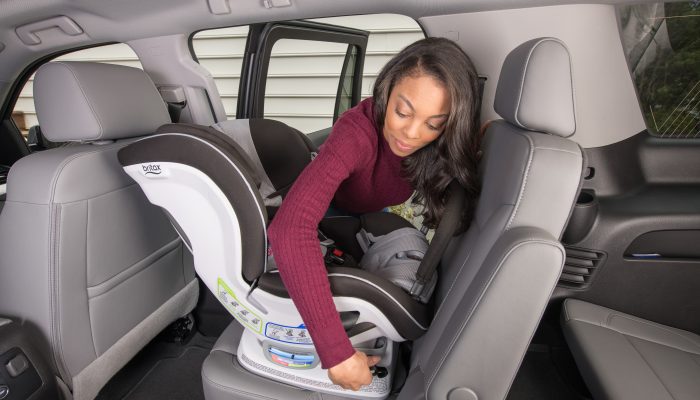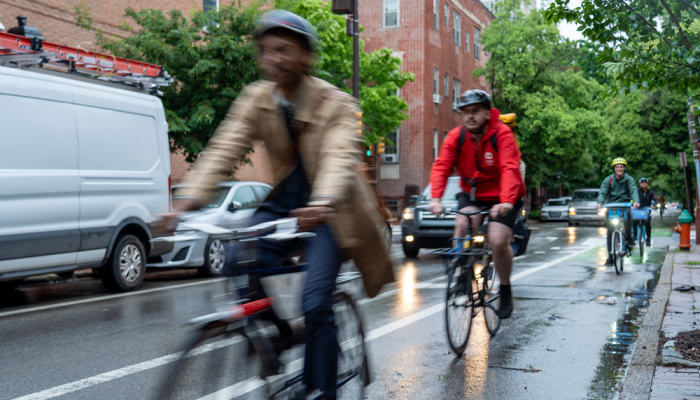Written by Elizabeth Dobbins, Office of Complete Streets
Are you using your child’s car seat correctly? Children are our most precious cargo, but keeping kids safe during car rides is not always straight-forward. Child Passenger Safety Week–September 19 through September 25—is a great time to learn how to protect children through age- and size- appropriate car seats, booster seats and seat belts.
Every day in Philadelphia, five children are involved in reported traffic crashes. Each week, one child in the city is involved in a serious injury or fatal crash. In 2017, car seats saved the lives of an estimated 312 children under 5-years-old nationwide, according to the National Highway Traffic Safety Administration (NHTSA).
Buckling up the right way for every trip saves lives. The Pennsylvania Traffic Injury Prevention Project (TIPP), the Pennsylvania Department of Transportation (PennDOT) and the City of Philadelphia are partnering to share some of the following tips with parents and caregivers during Child Passenger Safety Week:
Select the right seat
- Consider a child’s age, weight, height and developmental level when picking the right car seat, booster seat or seat belt. Seats must fit the vehicle as well as the child.
Check that car seat
- Most parents are confident they correctly installed their child’s car seat, but 46% of the time the seat has not been installed correctly, according to NHTSA. Refer to the seat’s installation instructions and the vehicles owner’s manual to make sure the seat is safely installed. For forward-facing car seats, always use tethers.
- The Children’s Hospital of Philadelphia is partnering with Safe Kids Buckle Up Program and Safe Kids Southeastern PA Coalition to offer virtual car seat checks, where safety checks are performed through video call. Schedule an appointment.
When it’s time, graduate from a car seat to a booster seat
- For older children, booster seats are an intermediate step between car seats and seat belts. They are designed to help ensure seat belts fit. When buckled up, a child’s seat belt should lie across the hips, be snug over the chest and shoulders, and touch the upper thighs. Seat belts should not rest on the stomach area or across the neck or face.
Back seat is the best seat
- Children under 13-years-old and under 4’9” should always ride buckled up in the back seat.
Be a role model and buckle up!
- Adults should always buckle up, too. Children are restrained 92% of the time when a driver is buckled, but only 68% of the time when the driver is unbuckled, NHTSA found.
Know the law
- Pennsylvania’s Occupant Protection Law for Children makes all drivers responsible for appropriately securing children during car trips. All children under 4-years-old must be secured in a car seat anywhere in the vehicle and children under two-years-old must be secured in rear facing seats until they outgrow the safety device’s maximum height and weight. Children between 4 and 8-years-old must be secured anywhere in the car using a seatbelt and an appropriate booster seat. Children over 8-years-old and under 18-years-old must use a seatbelt to buckle up.
Additional resources and a list of events are available here from PA Traffic Injury Prevention Project. The theme of Child Passenger Safety Week this year is “Love Me, Buckle Me, in the Right Seat at the Right Time.”




